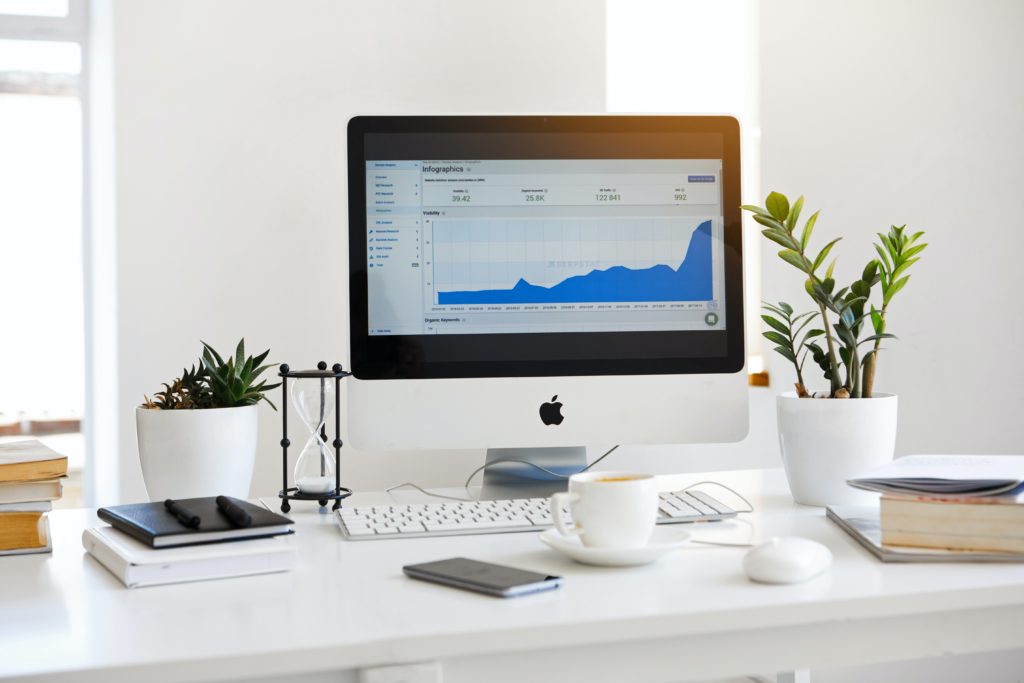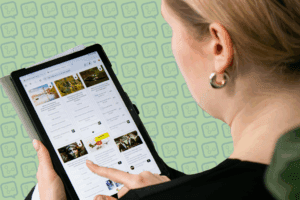Harnessing the Power of Influencer Marketing: Agency, Platform, or DIY – Which is Right for Your Business?

2017 is the year to invest in influencer marketing campaigns.
84% of marketers said they plan on launching at least one influencer campaign within the next 12 months.
So, you have to get involved, right?
Yes, but let’s think critically about this. What does getting involved mean? What tools would you use to launch your influencer marketing campaigns?
When starting an influencer marketing campaign you’ll first need to decide the level of help you require (and are willing to pay for). Your three options:
- DIY
- Use an influencer marketing platform
- Hire and influencer marketing agency
Let’s go over these options.
DIY
The do-it-yourself method is a decent way to dip your toe into the pool of influencer marketing, but it has more negatives than positives.
Pros
- It won’t cost you anything. End list.
Cons
- Finding influencers is tedious. It often involves a process I refer to as “branching,” in which you have one influencer in mind you’d like to work with and you look for similar influencers. When you find similar influencers you like, you repeat the process with them until you’ve developed a list of potential partners. Very monotonous.
- Insufficient data. DIY leads to an over reliance on surface level metrics such as follower counts. True influence is measured by engagement, but you have to dig deep to find these numbers. This often means eyeballing individual post engagement metrics (such as likes or comments) to get an idea of how valuable that influencer actually is. This isn’t very scalable.
- Campaign management is a mess. Clients I’ve spoken with often rely on spreadsheets to manage their campaigns. There’s a lot of factors to be crammed into a spreadsheet: your initial list of influencers, outreach results, grouping influencers who you successfully recruited, an influencer’s publication status, analytics for each piece of content produced and payment information – to name a few. The good news? You can have up to 1,048,576 rows by 16,384 columns in your spreadsheet.
If you are planning to run a small-scale influencer marketing campaign where you need only one or two influencers, the DIY method is not a bad starting point. Just don’t plan on scaling it.
Platform
Influencer marketing platforms have been popping up at a rapid pace for the past few years (we’re one of them!). Their goal is to remove the burden of running a DIY campaign by streamlining the identification, outreach and management process. There are two main branches within this model: marketplaces and self-serve. They each have their own pros and cons, so I will list them separately.
Marketplace
The bigger influencer marketing platforms have built their software in adherence with a marketplace model: they have recruited a network of influencers and have been made available to help execute your influencer marketing campaigns.
Pros
- Ready to work. These influencers have been recruited to partner with brands. Therefore, there is a far higher likelihood that they will accept your offer. Traditional outreach can lead to more erratic acceptance of offers.
- Targeted data. These platforms usually have certain analytics on the influencers they have recruited into their marketplace. You’ll be able to get an idea of what their audience demographics look like and where their other interests might lie.
- Campaign management tools. Fully integrated CRMs help you assist with communication and tracking – a big time saver. Rates are usually set within these platforms, streamlining the payment process and reducing the headache of negotiation.
Cons
- Very expensive. These marketplaces will charge you a hefty monthly fee just to access their influencers. This doesn’t include what you will be paying influencers to work on your campaign, just the access. If you end up going the marketplace route, make sure you include this access fee to your budget.
- Limited selection. These marketplaces are only as big as the amount of influencers they were able to recruit into their network. Often times, you’ll be stuck partnering with an influencer that is only tangentially related to your vertical due to lack of options.
- Transaction fees. While marketplaces makes the process of paying an influencer easier, some charge a percent of the overall transaction on top of what you are paying for access and to the influencers themselves.
Self-Service
Self-service influencer marketing platforms have software that allow you to search all influencers. For transparency purposes, this is the model we built the InfluenceLogic platform to run on. I believe in it far more than the marketplace model, but I’ll be fair with my pros/cons.
Pros
- More influencers. Self-service platforms have search engines that let you search the whole spectrum of influencers, they aren’t limited to someone else’s network.
- Better identification standards. In addition to an expanded search field, you’ll be able to run more specific search queries. For example, if you are looking for influencers that create content about League of Legends, you might be forced to choose from a generic “video game” category in a marketplace. With a self-service platform, you’d be able to run exact queries.
- Advanced data. Where a marketplace has data relevant to their influencers (see above), self-service platforms usually pull important data from the APIs of the various social networks. This can give you a better idea of influencer performance as the data comes straight from the source. On the InfluenceLogic platform, we offer engagement scores and growth rates to let you choose rockstar influencers.
- Campaign management tools. Much like the marketplaces, self-service platforms will have similar campaign management tools as well.
- Less expensive. Since there is no access fee and communication usually takes place outside platform itself, self-service platforms can be accessed for a far cheaper rate than a marketplace.
Cons
- Lower response rate. Marketplaces have recruited influencers for the purpose of working with brands, so it is going to be easier to partner with these influencers than ones you find through a self-service search engine. The search results you’d get through a platform like InfluenceLogic will return far more influencers, so in the end this won’t limit your ability to find willing content creators. Plus, there’s no guarantee an influencer you find via a marketplace will agree to work with you.
- External payment methods. Marketplaces usually have built in payment solutions and fixed rates with the influencers they recruit. Self-service platforms usually leave the negotiating and payment up to you.
Agency
Like most other marketing disciplines, you can always hire an agency to help you with your campaigns. Many agencies and PR firms are starting to get into the influencer marketing business.
Pros
- Easy. Ease is always the benefit of working with an agency. They are going to do the majority of the work for you. This will include identification, outreach, management, payment and reporting.
- Expertise. Managing influencer marketing campaigns can be hard. You need to know what type of influences to look for, how to negotiate with them and identify particular content strategies that would best promote your brand. Agencies make their living off of their knowledge and ability to execute on these challenges.
- Connections. Agencies my already have connections with various influencers related to your campaign, but they are also good at identifications. It’s kind of like getting the best of both words between the marketplace and self-service models.
Cons
- Cost. Hiring an agency to run your influencer marketing campaigns is definitely going to be the most expensive route you can take. Are you willing to pay the high per-hour costs to remove the burden of managing the campaign?
- Team members. When working with an agency, you often don’t have a say in who is assigned to your account. The team you first meet when you are vetting the agency isn’t always the team that will work on your campaign.
- Congestion. The team assigned to your case may have a variety of similar clients and may not be able to be as responsive as you would hope.
The pros and cons of an agency will solely depend on who you hire. There are many terrific agencies that are doing great work for their clients, there are some agencies that leave a lot to be desired. Be sure you are picking the right agencies for the right reasons.
The InfluenceLogic Way
We built InfluenceLogic as a self-service platform because we recognized how difficult it was to find and manage influencers. We also didn’t like the marketplace model. We believe you should have access to any influencer you want to work with. Our core tenants include:
- Find and work with any influencer you want. Our search engine lets you search the entire spectrum of influencers and narrow them down to who is creating content about the kewyord that is most relevant to your vertical. Our platform only serves YouTube right now (its the social network that drives the most action) but we will add Instagram soon.
- Robust data to get a true look at engagement. Our search engine and CRM lets you get a look at valuable data to help target the right influencers. Get a look at how engaging an influencer’s videos are, how consistent their engagement is across recent videos and how fast their channel is growing.
- Easily manage and track campaigns. Our CRM lets you track an influencer’s journey from identification to recruitment. Once an influencer has published their video, you can track it’s progress in our reporting section.
We’d love to show you how brands are using the InfluenceLogic platform to power their influencer marketing campaigns.
What is your plan for 2017? Will you invest in influencer marketing? Will you DIY or use an agency or platform? Let us know.





